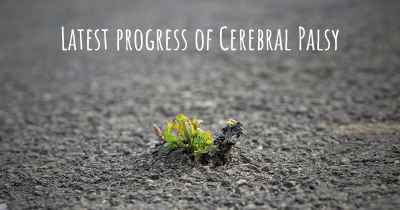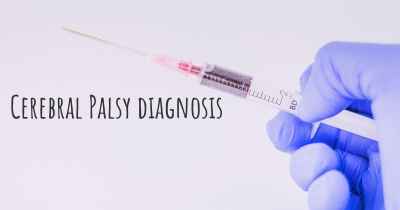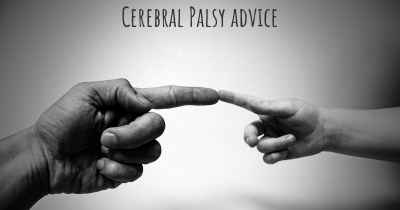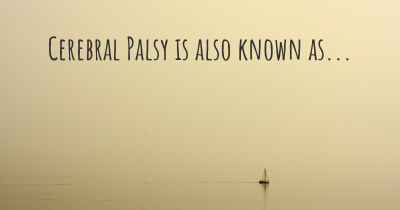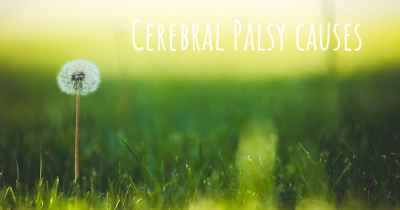
SPINA BIFIDA
Apr 4, 2016
By: Garth
Error
Spina bifida is an abnormality of the nervous system that occurs in a baby's development during the first month pregnancy. Most textbooks define spina bifida as a neural tube defect or a gap in the fusing of the neural tube that encloses the spinal cord. While a neural tube defect indicates a diagnosis of spina bifida, it is only part of what is a total nervous system disorder. The number of children born with spina bifida is approximately 1 in every 1000 births.
There are many types of spina bifida. The most common are:
Myelomeningocele
A sac containing an abnormally formed spinal cord protrudes from an opening in a baby's back. The nerves at and below the defect are damaged. The higher the defect occurs on the spine, the greater the number of nerves that are affected. Babies need surgery shortly after birth to repair the affected area of the back.
Meningocele
A baby is born with a sac protruding from an opening in the back. Unlike with Myelomeningocele, the sac doesn't contain the spinal cord. Most often, few nerves are affected. Babies need surgery shortly after birth to repair the affected area of the back.
Spina Bifida Occulta
In Spina Bifida Occulta, the bones around a baby's spinal cord fail to develop normally. The nerves of the spinal cord usually are normal, as is the skin on the back. Sometimes, however, there will be a dimple, hair patch or red discoloration on the skin at the point of the defect. Babies rarely need surgery shortly after birth to repair the defect.
Life Expectancy
Historically, a child born with a more serious form of spina bifida or more severe neural tube defect was expected to live a greatly abbreviated life. Today, however, increased education about spina bifida, emphasis on the importance of personal care, greater understanding of the accompanying health issues associated with the condition, as well as surgical advances have resulted in a much higher quality of life and greater life expectancy for persons with spina bifida. As many as 90 percent of persons born with spina bifida will survive into and possibly past their third decade of life. The current adult population living with spina bifida is reaching unprecedented levels of achievement.
Folic Acid and Spina Bifida
Folic acid, a B vitamin, has been found to play an important role in reducing the incidence of spina bifida. The U.S. Department of Health and Human Services' Center for Disease Control recommends that all women of child bearing age consume 400 mcg of folic acid per day. It is important to note, however, that taking a folic acid supplement, or consuming the equivalent of 400 mcg of folic acid in the diet, is not a guarantee against a child being born with spina bifida. Folic acid cannot "cure" spina bifida; rather, it can help reduce the chances of a child developing the condition in utero.
What happens now?
When a baby is diagnosed with spina bifida, the course of action a doctor may recommend depends entirely on the type of spina bifida and the location of the defect in relation to the baby's spine.
In children born with Myelomeningocele, surgery is performed shortly after birth to repair the abnormality and prevent further damage to the spinal cord and nerves. During surgery, the opening in the baby's back is sewn closed. The surgery does not bring back function, but serves to prevent further injury and infection. Because this opening is now closed, there is no way for cerebral spinal fluid (CSF) to drain and a condition called Hydrocephalus can occur. Hydrocephalus, commonly referred to as "water on the brain," is an abnormal accumulation of CSF within cavities inside the brain. It occurs when there is an imbalance between the amount of CSF that is produced and the rate at which it is absorbed. As the CSF builds up, it causes the cavities, also called ventricles, to enlarge and the pressure inside the head to increase. Surgery is performed to put a shunt in place that will allow this fluid to drain and maintain an appropriate amount of intracranial pressure. A shunt is a flexible tube placed into the ventricular system that diverts the flow of CSF into another region of the body where it can be absorbed.
Babies born with Meningocele also require surgery to close the opening in the back. Since the sac does not contain the spinal cord, the rest of the central nervous system is generally not involved and prognosis for development is excellent.
Spina Bifida Occulta occurs in as many as 20-30% of the population and often is not diagnosed until adulthood. Oftentimes patients are seen for back pain, enuresis and scoliosis - to discover through x-rays of the spine that they have spina bifida occulta. This type of spina bifida results in the least frequency of impairment.
In recent years, surgeons have begun to perform prenatal, intrauterine surgical repairs on the fetus to correct an abnormality. Intrauterine surgical repair reduces the baby's risk of contracting infection because the sac containing spinal cord tissue is no longer exposed to bacteria upon birth. This type of surgery is not without risks to both mother and baby, however, and the benefits must be carefully weighed against the risks.
While surgery will close the opening in the baby's back and prevent infection, the damage caused as a result of the nerves being exposed during the baby's development cannot be repaired.Individuals with spina bifida can have vastly varying degrees of impairment, from virtually no impairment to severe sensory, motor, autonomic and cognitive impairment. Myelomeningocele is the most severe form of spina bifida where many systems can be impacted in direct relation to how severe the abnormality is and where it occurs. Generally speaking, the higher the abnormality is on the spinal cord, the more systems that are involved. Some common problems/conditions that individuals born with spina bifida experience include:
Allergic reactions caused by prolonged exposure to latex
Bladder, bowel and kidney problems
Eye problems
Fractures
Hydrocephalus (excess fluid on the brain)
Learning disorders
Seizures
Skin problems
Tethered spinal cord
Social skills deficits
Weight gain/obesity
Depression and other psychological / psychiatric issues
It is likely that a child born with spina bifida will require numerous surgeries over the course of his/her life. Frequent hospitalizations require a great commitment of time, finances and energy on the part of the family and/or caregiver and can have quite an emotional impact on the family. There are local and national support groups available to parents and caregivers and the Spina Bifida Association of Western PA can offer suggestions for additional support.
Just as surgeries and hospitalizations impact families, they also take a physical and emotional toll on the individual with spina bifida. A loving and supportive family is only one critical factor in the emotional development and well being of a child born with spina bifida. Interaction and socialization with peers apart from a family setting is equally vital to his/her development. Camps and retreats specifically created for individuals with spina bifida, such as those offered year-round by the Spina Bifida Association of Western PA, provide an encouraging, supportive environment where children can make friends and learn how to care for themselves. Sometimes attending a camp or retreat is the first exposure a child has to others with the same challenges as him/her.
Common Physical Characteristics
Because of surgery performed to repair the spinal cord, individuals with spina bifida are often short in stature. Limited mobility and lower metabolic rate due to the condition often result in a greater likelihood of obesity
Understanding and Acceptance
Understanding and acceptance are key to living with spina bifida. All parents dream of having a "perfect" child, and a diagnosis of spina bifida can be daunting, causing fear and uncertainty. The fear of the unknown sometimes causes greater anxiety than the reality of a situation. Competent and caring medical professionals can help ease fears, as can reading through the information provided in this web site. Treatment methods may vary, depending on the practice philosophies of different medical professionals, but there is a core of best practices that can be followed to ensure that a child with spina bifida has the best possible chance to thrive in life.
Experienced Medical Care
It may seem obvious, but it is important to seek qualified, experienced medical professionals. Not all physicians and care practitioners are experienced in treating patients with spina bifida. Ask your physician for a referral to a specialist. Contact a local spina bifida clinic. If your health plan has a patient care hotline, call and ask for referral information.
Emphasize Personal Care
The importance of personal care increases as a child grows older and parents are less inclined to closely monitor their child's personal hygiene routine. Well-established, independent grooming habits that have been taught and reinforced from a very young age will help a child achieve and maintain better health as he/she matures into adulthood.
Individuals with spina bifida can lead very active lives, work, socialize, get married, have children and find fulfillment in a broad range of areas. While each individual is different, children with spina bifida can be expected to go through all of the same developmental stages that children without spina bifida do. However, they may experience additional challenges directly related to the type of spina bifida that they have and the severity of their impairment.
Spina bifida is not a progressive condition and does not worsen as an individual ages. However, the health issues faced by a person with spina bifida tend to vary with age. What is common in a young child may not be prevalent in an adult with spina bifida and the impact of these health issues is not the same throughout the life span.
The stages of development for a child with spina bifida can be broken down into age groups beginning with birth and continuing into adulthood. Just as all children learn to walk and talk, go through puberty and experience a growing need for independence at different ages, so do children with spina bifida. Thus, some physical and emotional developmental areas overlap and blend and there is no measuring stick for developmental success
Potential Topics:
Expectations of Developmental Progression
Developmental milestones that parents can anticipate
Potential developmental delays
(The Value of) Early Intervention Services
How & Where to get these services
Habilitation Issues
Mobility
Toileting
Nutrition
Medical Issues
Unstable Hip
Shunt Function & Malfunction
Arnold-Chiari Malformation - a congenital anomaly of the brain that occurs in almost all children born with both spina bifida and hydrocephalus, In infants, the most common symptoms are stridor and swallowing difficulties. In older children, upper limb weakness and breathing difficulties may occur. Patients may experience no symptoms or remain asymptomatic until early adulthood, at which point they will often experience severe headaches and neck pain. Fatigue, dizziness, vertigo, neuropathic pain, visual disturbances, difficulty swallowing, ringing in the ears, impaired fine motor skills, muscle weakness, and palpitations are other common symptoms. Some patients may go an entire lifetime without having noticeable symptoms. Or, symptoms can be minimal, then turn severe suddenly due to head trauma which alters the condition of the spine, brain, or cerebellar tonsils and begins to cause more difficulties. Once these "onset of symptoms" occurs, the most frequent treatment is decompression surgery, in which a neurosurgeon seeks to open the base of the skull and through various methods unrestrict CSF flow to the spine.
Failure to Thrive
Strabismus - also known as "heterotropia", "squint", "crossed eye", "cockeyed', "wandering eye", or "wall eyed", is a condition in which the eyes are not properly aligned with each other.
Potential Topics:
Expectations of Developmental Progression
A Developing Sense of Self
Introduction to the Social World
The Emergency of Sexual Identity
Habilitation Issues (dressing skills & other ADLS )
Wheelchairs & Transfers
Promoting Ambulation
Fine-Motor Function
Expectations of Developmental Progression
Visual Perceptual Function
Medical Issues:
Knees & Ankles Foot Problems
Middle Childhood (Age 6-12)
Potential Topics:
Expectations of Developmental Progression
Learning Abilities & Disabilities
Common Learning Characteristics
Attention Deficit Disorder (ADD)
Habilitation Issues
Gait Analyses
PT
Adaptive PE
CIC
Clean Intermittent Catheterization
Pharmacological Management of Incontinence (Managing incontinence with the aid of prescription drugs)
Management of the Neurogenic Bowel
Medical Issues
Growth & Growth Problems
Precocious Puberty - Puberty is the period in life when the body changes rapidly and develops reproductive capability. Precocious puberty is the development of body characteristics that normally occur during puberty before the age of 8 (girls) or 9 (boys). Children (of both sexes) with early sexual development are more likely to have psycho-social problems. Children and adolescents generally want to be the same as their peers, and early sexual development can make them appear "different". This can result in self-esteem problems, depression, acting out at school and home, and alcohol and illegal substance abuse. (National Library of Medicine)
Nutrition
Obesity Prevention
Urinary Tract Infections
Tethered Cord - Tethered spinal cord syndrome is a neurological disorder caused by tissue attachments that limit the movement of the spinal cord within the spinal column. These attachments cause an abnormal stretching of the spinal cord. The course of the disorder is progressive. In children, symptoms may include lesions, hairy patches, dimples, or fatty tumors on the lower back; foot and spinal deformities; weakness in the legs; low back pain; scoliosis; and incontinence. Tethered
There are many types of spina bifida. The most common are:
•Myelomeningocele
A sac containing an abnormally formed spinal cord protrudes from an opening in a baby's back. The nerves at and below the defect are damaged. The higher the defect occurs on the spine, the greater the number of nerves that are affected. Babies need surgery shortly after birth to repair the affected area of the back.
•Meningocele
A baby is born with a sac protruding from an opening in the back. Unlike with Myelomeningocele, the sac doesn't contain the spinal cord. Most often, few nerves are affected. Babies need surgery shortly after birth to repair the affected area of the back.
•Spina Bifida Occulta
In Spina Bifida Occulta, the bones around a baby's spinal cord fail to develop normally. The nerves of the spinal cord usually are normal, as is the skin on the back. Sometimes, however, there will be a dimple, hair patch or red discoloration on the skin at the point of the defect. Babies rarely need surgery shortly after birth to repair the defect.
Life Expectancy
Historically, a child born with a more serious form of spina bifida or more severe neural tube defect was expected to live a greatly abbreviated life. Today, however, increased education about spina bifida, emphasis on the importance of personal care, greater understanding of the accompanying health issues associated with the condition, as well as surgical advances have resulted in a much higher quality of life and greater life expectancy for persons with spina bifida. As many as 90 percent of persons born with spina bifida will survive into and possibly past their third decade of life. The current adult population living with spina bifida is reaching unprecedented levels of achievement.
Folic Acid and Spina Bifida
Folic acid, a B vitamin, has been found to play an important role in reducing the incidence of spina bifida. The U.S. Department of Health and Human Services' Center for Disease Control recommends that all women of child bearing age consume 400 mcg of folic acid per day. It is important to note, however, that taking a folic acid supplement, or consuming the equivalent of 400 mcg of folic acid in the diet, is not a guarantee against a child being born with spina bifida. Folic acid cannot "cure" spina bifida; rather, it can help reduce the chances of a child developing the condition in utero.
Why me/my child?
Most parents, when learning of a diagnosis of spina bifida, wonder if they did something to cause their child to have this condition. Nothing a parent does or does not do results in a child being born with spina bifida. There is no known cause of spina bifida.
What happens now?
When a baby is diagnosed with spina bifida, the course of action a doctor may recommend depends entirely on the type of spina bifida and the location of the defect in relation to the baby's spine.
In children born with Myelomeningocele, surgery is performed shortly after birth to repair the abnormality and prevent further damage to the spinal cord and nerves. During surgery, the opening in the baby's back is sewn closed. The surgery does not bring back function, but serves to prevent further injury and infection. Because this opening is now closed, there is no way for cerebral spinal fluid (CSF) to drain and a condition called Hydrocephalus can occur. Hydrocephalus, commonly referred to as "water on the brain," is an abnormal accumulation of CSF within cavities inside the brain. It occurs when there is an imbalance between the amount of CSF that is produced and the rate at which it is absorbed. As the CSF builds up, it causes the cavities, also called ventricles, to enlarge and the pressure inside the head to increase. Surgery is performed to put a shunt in place that will allow this fluid to drain and maintain an appropriate amount of intracranial pressure. A shunt is a flexible tube placed into the ventricular system that diverts the flow of CSF into another region of the body where it can be absorbed.
Babies born with Meningocele also require surgery to close the opening in the back. Since the sac does not contain the spinal cord, the rest of the central nervous system is generally not involved and prognosis for development is excellent.
Spina Bifida Occulta occurs in as many as 20-30% of the population and often is not diagnosed until adulthood. Oftentimes patients are seen for back pain, enuresis and scoliosis - to discover through x-rays of the spine that they have spina bifida occulta. This type of spina bifida results in the least frequency of impairment.
In recent years, surgeons have begun to perform prenatal, intrauterine surgical repairs on the fetus to correct an abnormality. Intrauterine surgical repair reduces the baby's risk of contracting infection because the sac containing spinal cord tissue is no longer exposed to bacteria upon birth. This type of surgery is not without risks to both mother and baby, however, and the benefits must be carefully weighed against the risks.
It is likely that a child born with spina bifida will require numerous surgeries over the course of his/her life. Frequent hospitalizations require a great commitment of time, finances and energy on the part of the family and/or caregiver and can have quite an emotional impact on the family. There are local and national support groups available to parents and caregivers and the Spina Bifida Association of Western PA can offer suggestions for additional support.
Just as surgeries and hospitalizations impact families, they also take a physical and emotional toll on the individual with spina bifida. A loving and supportive family is only one critical factor in the emotional development and well being of a child born with spina bifida. Interaction and socialization with peers apart from a family setting is equally vital to his/her development. Camps and retreats specifically created for individuals with spina bifida, such as those offered year-round by the Spina Bifida Association of Western PA, provide an encouraging, supportive environment where children can make friends and learn how to care for themselves. Sometimes attending a camp or retreat is the first exposure a child has to others with the same challenges as him/her.
Common Physical Characteristics
Because of surgery performed to repair the spinal cord, individuals with spina bifida are often short in stature. Limited mobility and lower metabolic rate due to the condition often result in a greater likelihood of obesity
i am 49 years old born with Spina Bifida Occulta
is considered the mildest form of spina bifida, which is a birth defect that affects the vertebra of the spinal column. It gets its name from the fact that a layer of skin covers up the defect, meaning that the defect is obscured. This type of spina bifida doesn't typically cause disabilities or symptoms, but like all forms of the disease, complications can arise.
Spina Bifida
•
Paralysis
•Paralysis is typically not an issue with spina bifida occulta, since it is the mildest form of the disease. But it is one of the more severe complications of the more severe forms of spina bifida. The paralysis can be partial or complete, and it results in the patient's reliance on a wheelchair or crutches to move around. I have to wear nappies as a result of spina bifida.i also have , epilepsy, ASPERGERS AND CANCER
0 comments
